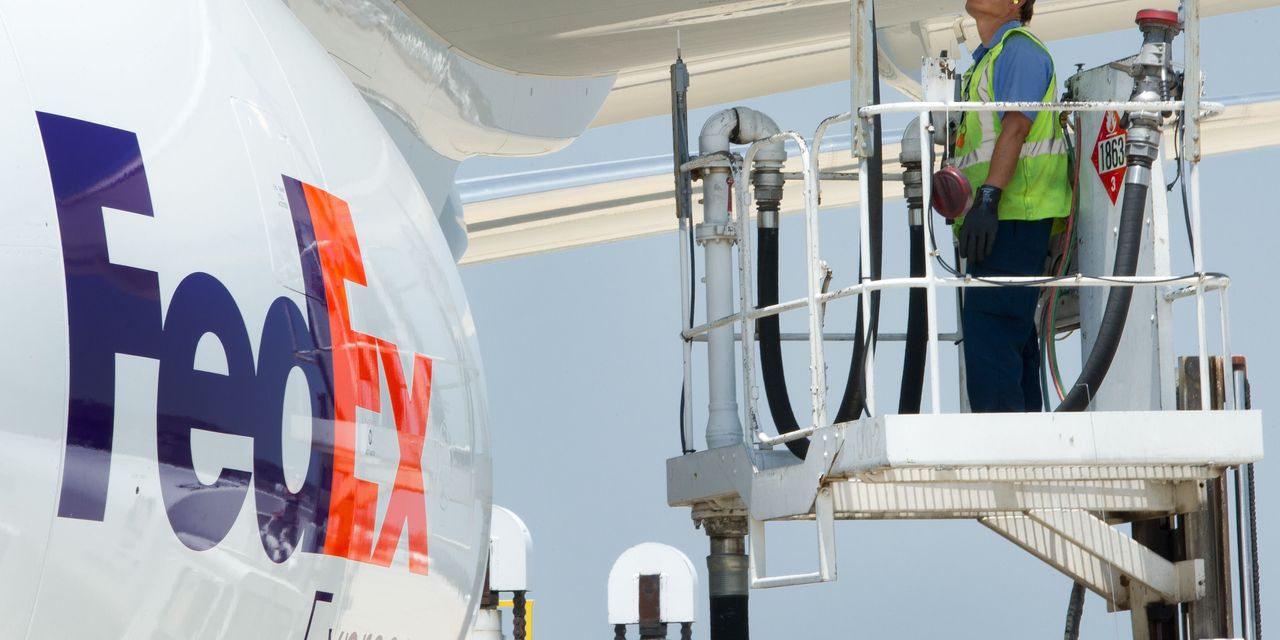
FedEx Corp. shares slid 5% Friday, after the company posted weaker-than-expected profit for its fiscal third quarter, as the highly infectious omicron variant of the coronavirus led to staff sickouts and reduced customer demand early in the year.
The company FDX, -4.99% stuck with its guidance for adjusted profit in fiscal 2022, which is in range of Wall Street forecasts.
JP Morgan analysts said they were surprised that FedEx failed to get as much of a boost from its fuel surcharge, which the company said had provided a “significant benefit” to operating income.
“This tailwind will continue in F4Q22 as FedEx just raised its surcharge tables again effective April 4; however we are concerned that the F3Q22 results weren’t stronger with this significant lift from fuel,” analysts led by Brian Ossenbeck said in a note to clients.
“The underlying earnings power of Ground likely remains questioned through the Investor Day at the end of June when it appears management will pivot back to expanding margins with lower capital intensity and higher productivity.”
See: FedEx Express CEO to retire end of 2022
JP Morgan is sticking with its overweight rating on the stock, but cut its price target to $282 from $297.
Oppenheimer analysts said they were encouraged by FedEx maintaining its guidance as headwinds become less harsh over time. However, analysts led by Scott Schneeberger said they are sticking with their perform rating on the stock, “as geopolitical issues keep uncertainty elevated and the company’s in a “show me” position with regard to margin improvement.”
The company reported fiscal third-quarter net income of $1.1 billion, or $4.20 a share, for the quarter to Feb. 28, compared with $892 million, or $3.30 a share, in the year-ago period. Adjusted earnings, which exclude stock-based compensation expenses and other items, were $4.59 a share, compared with $3.47 a share in the year-ago period.
Revenue rose to $23.6 billion from $21.5 billion in the year-ago quarter.
Analysts surveyed by FactSet had forecast $4.65 a share on revenue of $23.41 billion.
Read also: FedEx suspends operations in Russia, Belarus, Ukraine
FedEx said earnings were boosted by higher revenue per shipment and the net fuel benefit, as well as lower variable compensation costs and less severe winter weather. Offsetting those were the effects of omicron and higher purchased transportation costs and rising wages.
Excluding year-end mark-to-market accounting adjustments for retirement plans and other charges, FedEx kept its forecast earnings at $20.50 to $21.50 a share, while analysts estimate earnings of $20.59 a share.
The company said the forecast assumed, among other things, “no new COVID-19-related business restrictions, current fuel-price expectations and no additional adverse geopolitical developments.”
See: UPS stock rockets toward a record after big profit and revenue beats, 49% dividend boost
On a call with analysts, executives offered more details of labor costs, which rose sharply at the company’s Ground division from the year-earlier period.
Chief Operating Officer Rajesh Subramaniam said the total impact was about $210 million in the quarter, which was lower than in the first and second quarters, and has improved further as labor shortages have started to clear.
“With the stabilization in the labor environment, I’m pleased to share that we have successfully unwound network adjustments that were necessary to provide service but cost inefficiencies,” he said. “Staffing levels and the rapid acceleration in labor costs have stabilized and our network is operating at normal levels.”
Cowen maintained its outperform raring on the stock and price target of $310. Analyst Helane Becker said she expects the company is committed to returning capital to shareholders, noting it has bought back 3% of its outstanding shares since the start of the current fiscal year.
FedEx shares have fallen 18% in the last 12 months, while the S&P 500 SPX, +0.57% has gained 13%.








